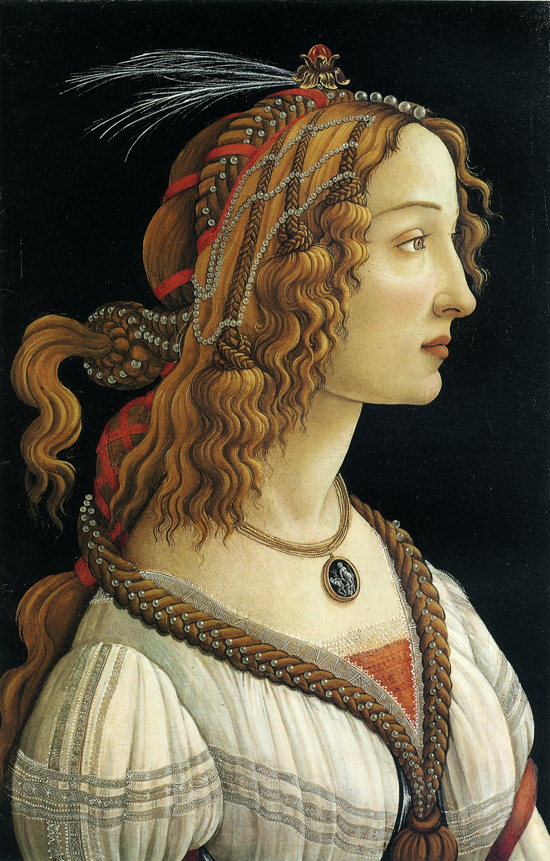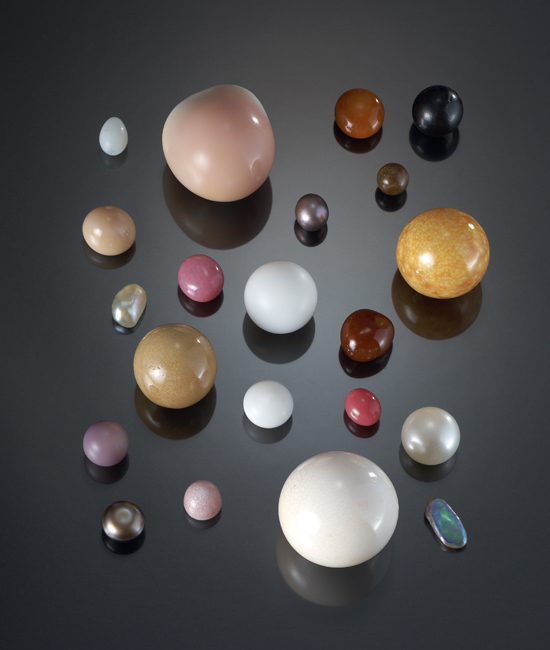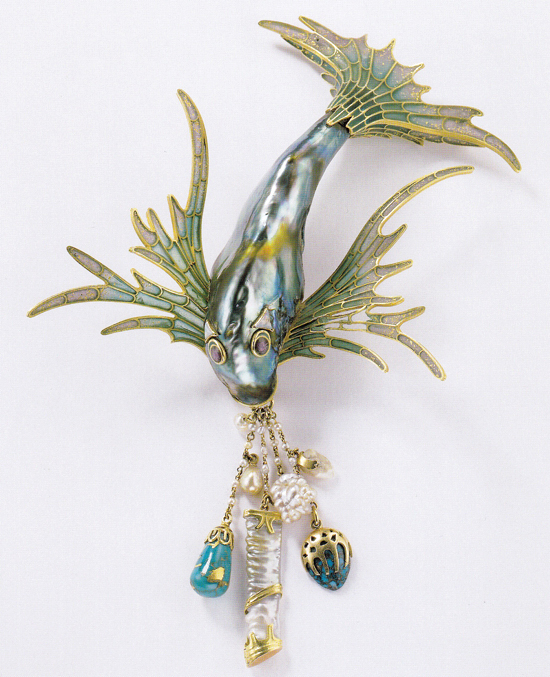Tagged with 'Pearls and Art'


The very latest news, musings and opinions from the world of Winterson. Quite simply, a celebration of a jewellery, fashion, culture and the business behind luxury.
-
Who Was Botticelli's Famous Venus?
Who Was Botticelli's Famous Venus?
Born in Florence, Italy in 1445, little is known of the life of Sandro Botticelli. Perhaps even less is known about one of is most famous paintings 'La Nascita di Venere, The Birth of Venus', which is displayed today at the Uffizi Gallery in Florence.
The painting depicts a vision of Venus, the goddess of love, emerging naked from the sea as a fully grown woman standing in a scallop shell on the seashore. This sublime fantasy has been admired throughout the years for its themes of love, beauty and spirituality.
One of the mysteries of the painting, commissioned by a wealthy Florentine family, was who the self-titled Venus was that Botticelli depicted so well.
Belonging to the ‘golden age’ of the Early Renaissance, Botticelli is believed to have trained as a goldsmith, before becoming a painter.
Botticelli never married, but history suggests that he held an unrequited love for a Florentine women, Simonetta Vespucci. She was a married noble woman, said to have a mesmerising beauty and was known as la bella Simonetta.
The Ideal Portrait of a Woman is a slightly lesser known, but equally favourite work by Botticelli. He painted this piece between 1480-85 and it depicts a women with quintessential Italian Renaissance attributes. With pale skin, an extended neckline, voluptuous long red hair, she is shown here in an elegant profile.

The women is wearing a white robe in fashion at the time, which is adorned with natural pearls. The pretty gemstones in strings are woven into the plaits of her hair and into a braid that runs down into her breast.
The painting is sharp and precise. The pearls shine on the painting, perhaps a nod to Botticelli's earlier training as a goldsmith and his eye for jewellery.
Centuries later, experts are still debating who the beautiful woman of Botticelli's Ideal Portrait may have been. A nymph perhaps, a goddess or a courtesan? Or Simonetta Vespucci?
In the late nineteeth century, the German art historian Aby Warburg deepened the mystery, suggesting that Botticelli’s Venus was also Simonetta Vespucci. The resemblance is striking. The provenance of both paintings is also well known as both were commissioned by members of the Medici family.
Although Simonetta Vespucci had died in 1476, some years before both paintings were completed, Botticelli had not forgotten his muse. When he died, Botticelli requested to be buried at her feet, a wish that was carried out in 1510 when he passed away.
We may never be sure. But it could be that the inspiration for both Botticelli's Venus and this mysterious Florentine woman was one and the same. His Ideal Portrait may be literally just that - a portrait of his ideal woman, la bella Simonetta.
-
Pearls Exhibition at the V&A Museum
Pearls Exhibition at the V&A Museum
With much excitement and anticipation, the Pearls exhibition at the V&A Museum opens later this month in London.
PEARLS EXHIBITION AT THE V&A
Promising to be one of the biggest Autumn shows, the exhibition will show off the luxurious qualities of some of the world's most unusual and valuable pearls and jewellery, as well as exploring the unique heritage and impact on popular culture of this beautiful gem.
We are very fortunate to be able to ask Beatriz Chadour-Sampson and Hubert Bari, the curators of the Pearls exhibition, about the show and what a visitor can look forward to. We would like to thank them, the V&A and the Qatar Museums Authority for their support with this article.
Here are Beatriz and Hubert's thoughts on 'Pearls'.
How special has this exhibition been for you and to curate? What did you hope that its visitors may learn about pearls?
From all gems, it is the most unusual as the natural pearl is produced by living animals. Even cultured pearls after human intervention are created by nature. Visitors will be amazed to learn that, in principle, any mollusc can produce a pearl from the giant clam to the land snail, and they will be dazzled by the variety of shapes and colours of pearls.
The history of the trade of pearls between continents is fascinating, and how East and West share the same passion for pearls.

Pearls have a unique symbolic significance and mystique. Can the pearl claim to be the world's favourite gem?
Incredibly, pearls have created a global fascination over millennia, like no other gem. There is something magical about pearls, their beauty lies in their perfection of form and most of all lustre. They are born in the form that nature made them with a natural sheen.
Pearls have always been a symbol of femininity. Maybe this is the reason why the fashion for pearls continues today.

The exhibition showcases many famous examples of pearl jewellery, many styles of which are still being referenced today in popular culture. Have we already seen a 'golden age' of pearl jewellery design or is the pearl a gem that will be constantly reinvented?
Yes, as no other gem has been worn as consistently, as pearls. Pearls are neutral and versatile, appropriate for any occasion. In previous years jewellers have shown a persistent, if not renewed interest in creating new designs with pearls.

What is the most striking or surprising aspect for you about the history of the pearl?
The fascination for pearls and wish to wear these beauties of nature transcends cultures and borders. The similarities in the myths and legends surrounding the pearl in East and West are astonishing. Pearls mark authority and power, symbolize prosperity and on a more personal note they are associated with joy at weddings or tears as a sign of mourning.

Natural pearls have undergone a renaissance in the last decade, achieving spectacular prices at auction, and cultured pearls are being produced in better, more diverse and beautiful qualities. What does the future hold for this gem?
The future of the pearl depends on so many factors, not least the condition of our seas. Natural pearls are simply too rare and expensive, only affordable to the very few. Today China produces such quantities of cultured pearls of inferior quality, that they are endangering the pearl market. Whilst they give great care when creating one pearl from an oyster, the Chinese produce 50 in one mussel, at low cost in rice fields or near housing estates. In South East Asia the farms which produce the beautiful South Sea pearls are experiencing not only financial difficulties but the effects of pollution and for these reasons their future remains uncertain.

The desire for pearls has been so insatiable that imitation pearls have existed over centuries and their advocate in the 1930s Coco Chanel was instrumental in reviving the fashion for pearls and revived the industry at a time when this was unthinkable. No one can tell what the future will hold for this beautiful gem, but the fashion for pearls endures.
The 'Pearls, V&A and Qatar Museums Authority Exhibition', runs from 21 September 2013 to 19 January 2014 as part of the Qatar UK 2013 Year of Culture.
To learn more about the exhibition, visit the V&A website here.
-
A Poem for Valentine's Day
A Poem for Valentine's Day
Sometimes the simplest of thoughts can say it all.
With Valentine's Day being celebrated by lovers around the world this week, why not take a moment for some inspiration from one of our greatest and most romantic poets?
In his short life John Keats (1795-1821) wrote some of the most beautiful and sensual poetry that we know, including hundreds of letters and poems to the great love of his life Fanny Brawne.
Their time together, however, was cut tragically short. Soon after having met in the Autumn of 1818, Keats was diagnosed with tuberculosis. Moving south away from the cold English winter, Keats died in Rome in 1821 at the early age of 25. After leaving London, Keats did not see Brawne again and asked to be buried with a lock of her hair and her unopened letters that had been too painful for him to read.
This poem by Keats from an unidentified opera was published some time after his death and is filled full of longing for a lost love, who Keats symbolically compares to the innocence and purity of a perfect white pearl.
Asleep! O Sleep A Little While, White Pearl!And let me kneel, and let me pray to thee,And let me call Heaven’s blessing on thine eyes,And let me breathe into the happy air,That doth enfold and touch thee all about,Vows of my slavery, my giving up,My sudden adoration, my great love! John Keats, Extracts from an Opera, 1818
Our perfect gift for Valentine's Day would be this beautiful Akoya Pearl and Diamond Pendant, which features a classic round, white Akoya pearl with a sparkling diamond set in 18 carat white gold.
An understated and elegant piece of jewellery, there could be few simpler ways to surprise and celebrate your love.
-
A Klimt Painting or A Pearl Necklace?
A Klimt Painting or A Pearl Necklace?
July 14th 2012 is the 150th anniversary of Gustav Klimt's birth.
The Austrian painter is best known for his sensual paintings and sketches of the female form, often adorned with gold leaf and inspired by the inlays and detail of jewellery. His three beautiful friezes for the Palais Stoclet, the private mansion of a Belgian industrialist, incorporated enamel, coral, semi-precious stones and even pearls. In recent years, works by Klimt have become highly sought after, and copied, with his portrait titled Adele Bloch-Bauer I setting a new record at auction in 2006 for a reported $135m.
The image above has a fascinating history. One of Klimt's keenest supporters in Vienna was a young lady called Friederike Maria Beer. She was offered a necklace of natural pearls as a gift from her suitor Hans Böhler, but declined asking him to commission a portrait by Klimt instead. Klimt initially refused, but eventually agreed to Beer's commission. Beer came to the portrait sittings over several months in a red silk coat designed by the Wiener Werkstätte (Viennese Workshops), a co-operative design society co-founded by the owner of the Palais Stoclet. Klimt asked Beer to wear the jacket inside out and, in keeping with the many Asian influences in his work, painted a Korean battle scene in the background.
The portrait of Friederike Maria Beer is currently on display at the Tel Aviv Musuem of Art, having been donated to the museum by the Mizne-Blumental Collection. This joint estate of over 60 masterpieces, including works by Kandinsky, Picasso, and Dali amongst others was the early 20th century art collection of a Ukranian musician and Polish painter who began avidly collecting art after the end of the second world war . At the time of loan to the Museum, the Klimt painting was valued at over $100 million...in hindsight a very astute decision by the young Miss Beer!
The Belvedere Museum in Vienna celebrates '150 years of Gustav Klimt' from 12th July 2012 to 6th January 2013.
-
Girl with a Pearl Earring
Girl with a Pearl Earring
The pearl really is one of nature’s true wonders. The reflections of light from thin translucent layers beneath a pearl’s surface create a series of unique shimmering colours that are found in no other gemstone.
The mesmerizing surface of pearls has inspired many artists to capture this gemstone in paintings and one of the most famous such paintings is the Girl With A Pearl Earring by Dutch artist Johannes Vermeer.
After the journey to the New World by Christopher Columbus in 1492, natural pearls became the largest export from the New World to Europe for almost fifty years until the later development of gold mines in Peru and Mexico. With more of these wondrous gemstones reaching Europe, there was a “pearl rush” amongst the rich and royal European families eager to show their wealth and status.

One of the main trading centres in Europe for pearls was Holland. Artist Vermeer (1632-1675) was the son of a prosperous Dutch merchant in Delft and would have observed for himself how pearls were being worn, envied and sought after.
Vermeer’s paintings depict an emerging class of wealthy merchant families. There are thirty five paintings attributed to Vermeer today, but perhaps the most famous is the Girl With A Pearl Earring. Vermeer painted his masterpiece in 1665-66. Sometimes called the “Mona Lisa of the North”, the painting hangs today in the Mauritshuis Gallery in The Hague.

The composition of the painting is balanced, almost peaceful. On a dark, near black background, a girl is depicted wearing simple clothing of natural colours and a blue headscarf. The large pearl drop earring is an essential element of the painting, laying towards the centre of the frame.
The girl in the painting has a questioning expression, looking over her shoulder. Some historians have suggested that the girl may have been one of his daughters and others have proposed that she was a maid helping Vermeer with his work.
The light gently enters the painting from the left side as if early sunshine is glancing through a window, and is being reflected on the girl’s face and by the shimmering lustre of the pearl.
Like the radiance of a natural pearl, the Girl With A Pearl Earring carries an era of mystery and beauty.
Who is this young girl and what is she asking or telling us?